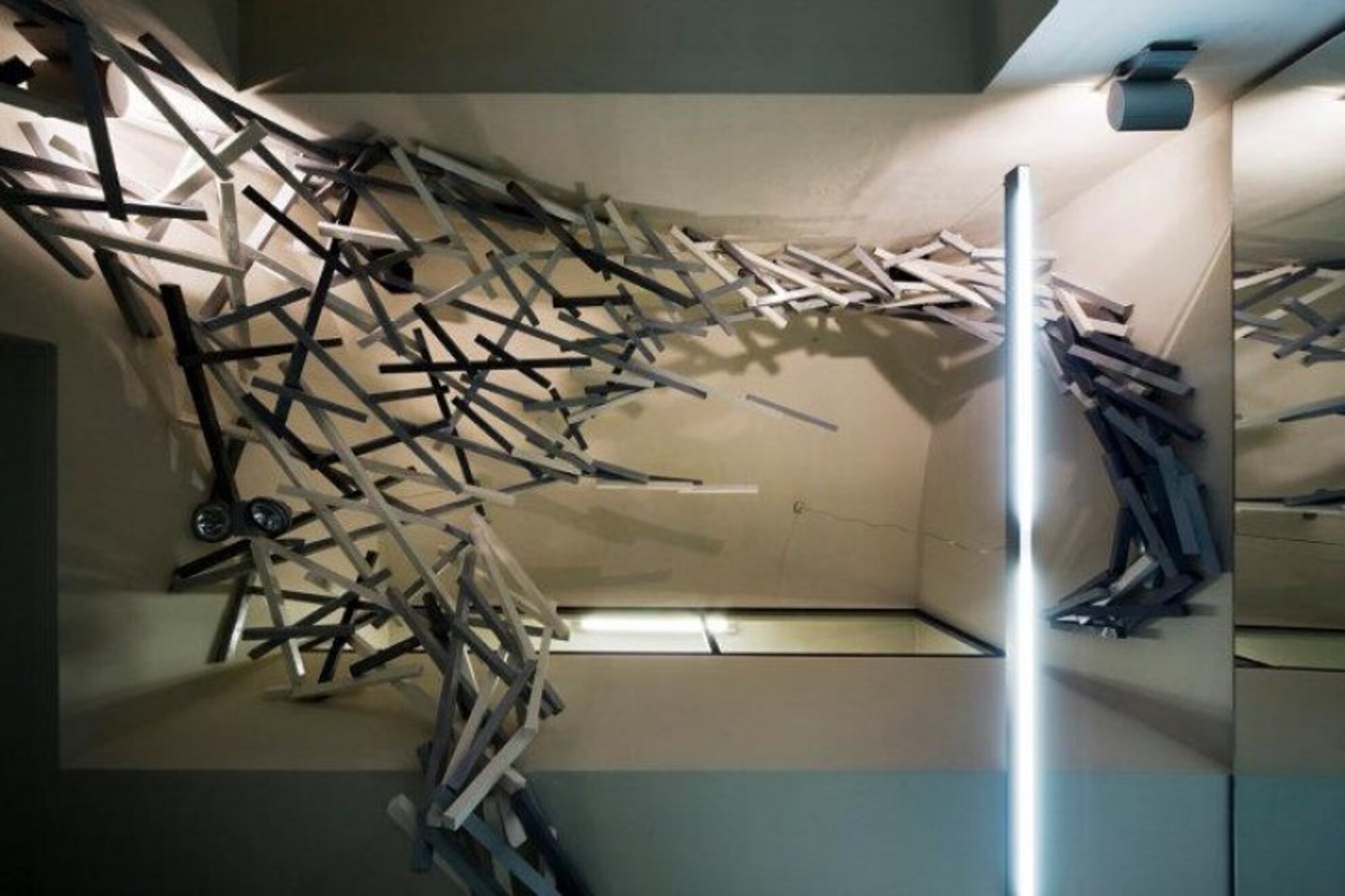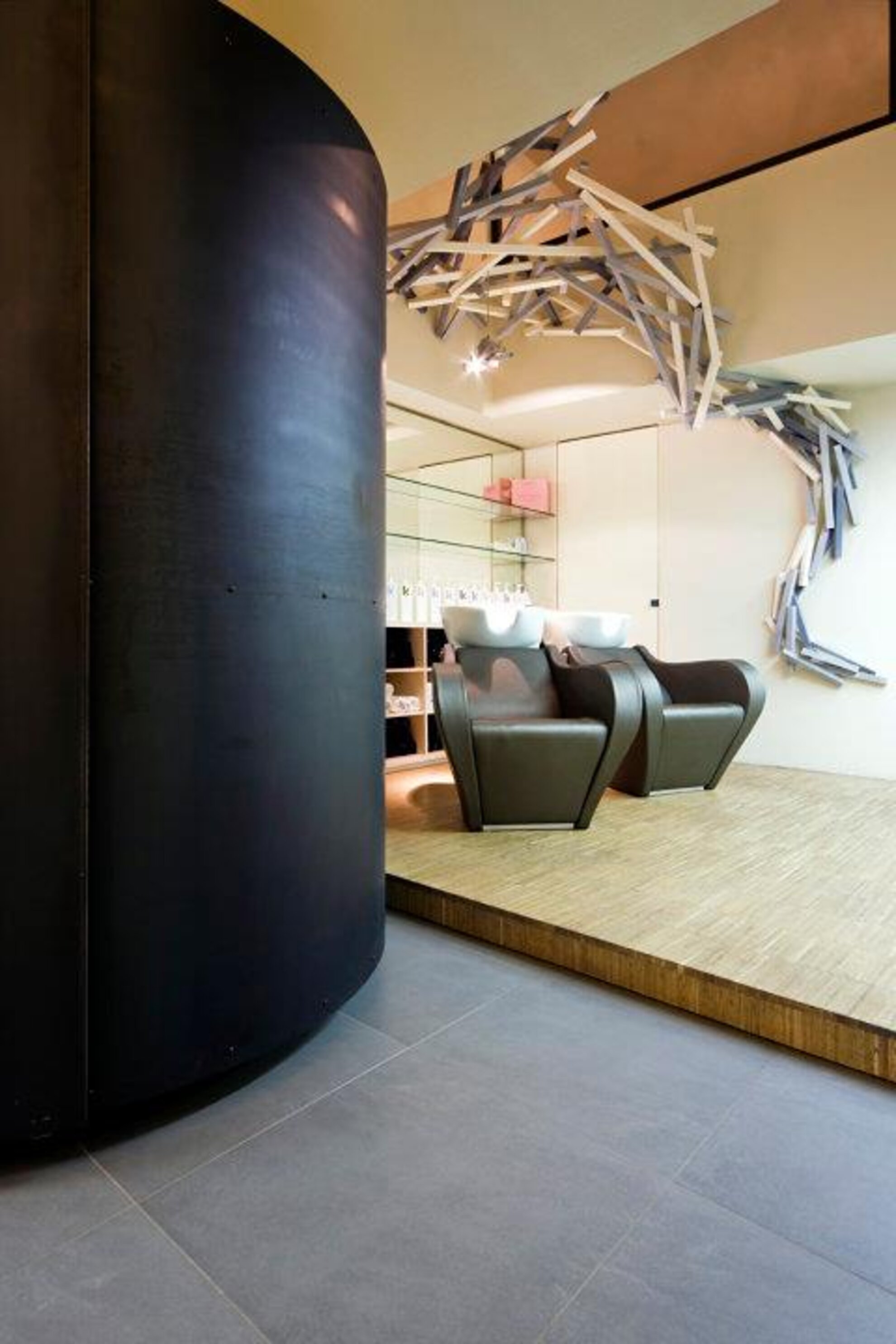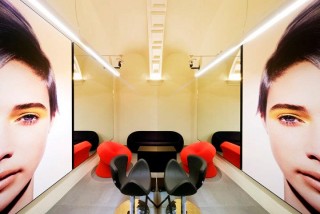We Love Budapest: How did you end up wielding the hairdressing scissors?
Subert Zsolt: I started the trade 11 years ago, at Hajas, when my parents sent me off to do some work, that is, washing people’s hair, hoping that I would learn what real work is, and would surely choose college instead.
W.L.B.: But the deterrent was so well executed that you fell in love with all this and became a hairdresser?
S.Zs.:Yes, I stayed with Hajas for 3 years, and did the hairdressing crash course within 8 months.
It was a fine period of my life, we could go to London where I got to know a lot of fun people, who liked what they were doing. Later I joined the Toni&Guy team, where I won the Toni&Guy competitions in both 2005 and 2006, and my pictures were published in the 2007 Toni&Guy Kaizen Book all over the world.
W.L.B.:So I guess it was a no-brainer that you wanted to test yourself abroad too.
S.Zs.:Yes, I moved to London, and worked at the Toni&Guy in Covent Garden for almost a year. But there I had to realize pretty soon that it became too ordinary, and noticed the deficiencies of the brand, and I wanted to take a different direction. So I first joined CONCRETE HAIR, then HOB, and had the opportunity to work with masters such as Akin Konizi, Christel Lundqvist, Darren Bain, the best of them all. I worked with Rudi Lewis, too, and those works were published in 10 Magazine, Love Magazine, and I-D Magazine. I worked relentlessly, with 11 customers a day. I had to work for my position without stop because I knew that if I make a mistake, three other people are ready to take it. The expectations are high, a customer cannot wait more than five minutes under any circumstances.
W.L.B.:What differentiates these salons from those of Hungary?
S.Zs.:Communication is totally different. You have to consult with each customer for at least five minutes in order to get to know them, and tune in to them. Following that there’s no way you can mess up their hair. You also have to be prepared for fussy customers, and women who are completely unsatisfied with themselves, and you have to make them believe that they’re wrong, and make them leave the salon trusting in their own beauty.
W.L.B.:I’ve always wondered if it’s advised to talk with the hairdresser or you can remain silent.
S.Zs.:It’s up to you, really. However, I’m someone who everybody talks with (laughing) because I talk all the time. I do it usually because if I start it, they won’t get embarrassed, and they won’t feel it compulsory. Some come to us, for example, to reminisce about half of their life. Some come because of their hair, some for something else.

W.L.B.:Well then, let’s get back to your career! Having done all that, you arrived home to Budapest in 2010.
S.Zs.:Yes, I came home, had a good rest, and felt I had to join a team, but I found most of the places here not enough. And then came the idea of a salon of my own with furniture of my own and products of my own. I had the pretty definite opinion that I could only be independent in Hungary if I own everything from the scissors to the chairs, everything. In the meantime I was pondering about what the name of the salon should be. It’s always suspicious in my case if I’m at a loss for ideas, and get stuck, so there came the idea of franchise, joining Saco. The techniques are much better here, the cutting, the education, all from the best place, London, where 10 people deal with the creative background of the brand alone on a yearly basis. By the way, the owner of Saco was the creative director of Vidal Sassoon, which tells a lot about the standards.
W.L.B.:Speaking of London, if I’m not mistaken you took part in this year’s London Fashion Week, too, which is especially a great result from a Hungarian team. What was it like?
S.Zs.:There has never been a Hungarian team at the Fashion Week. Since I am the creative member of the European Kevin Murphy, we managed to get there. I met the leading master in Copenhagen, where he chose me for best participant. That’s how I got the green light to London. I took Balázs Barsi with me, who is the biggest aspirant among the Hungarian talents. He is getting more and more well-known in Hungary. By the way, I like making my students successful, I don’t force myself into the foreground, I’ve always been a team player.
W.L.B.:What was your vision of the design? Let’s face it, this place can be called many things but a typical hair salon.
S.Zs.:I didn’t have any vision in the beginning but a famous interior designer, Dóra Fónagy, has been my customer for something like 10 years now, and it was her who I told about my plans during drying, and asked if she would be the designer. “Why the hell not?” – came the quick response. (laughing)

Dóra Fónagy: It’s important to mention that in the making of the design Zsolt was rather a member of the creative team than a customer. Besides, it should be noted that this hair salon is deceptively creative at places, as it’s a mental basis that has to be communicated in a special way. In the entrance of this creative workshop then, is not a reception but a red amoeboid shape that obscures the existing oppositions between provider and customer, and pulls anybody into its arching body. Just like the entrance ritual the waiting routine changes, too, as instead of the usual scenario of customers kept waiting away from those being prepared as on an assembly line everybody lives inside the space. This is provided for by the 100-kilogram-heavy mirrors hanging on the supporting walls and inside the space. The mirrors also do a great job of magnifying the place. From the active space opens a more intimate room with a loft and a Gábor Miklós Szőke installation, which is there to enliven the minutes of staring upwards. This way, contrary to usual practice, that is, when out-of-place details and blinding neon light violate our line of sight when looking up during washing, here, you can observe a sculpture specifically designed for this particular perspective.
W.L.B.:What are your plans for the future, how do you intend to go on?
Mostly I’d like to go on with what we’ve been doing for the past years: working together with Hungarian fashion magazines and teams, and popularizing the salon to ever more people.




